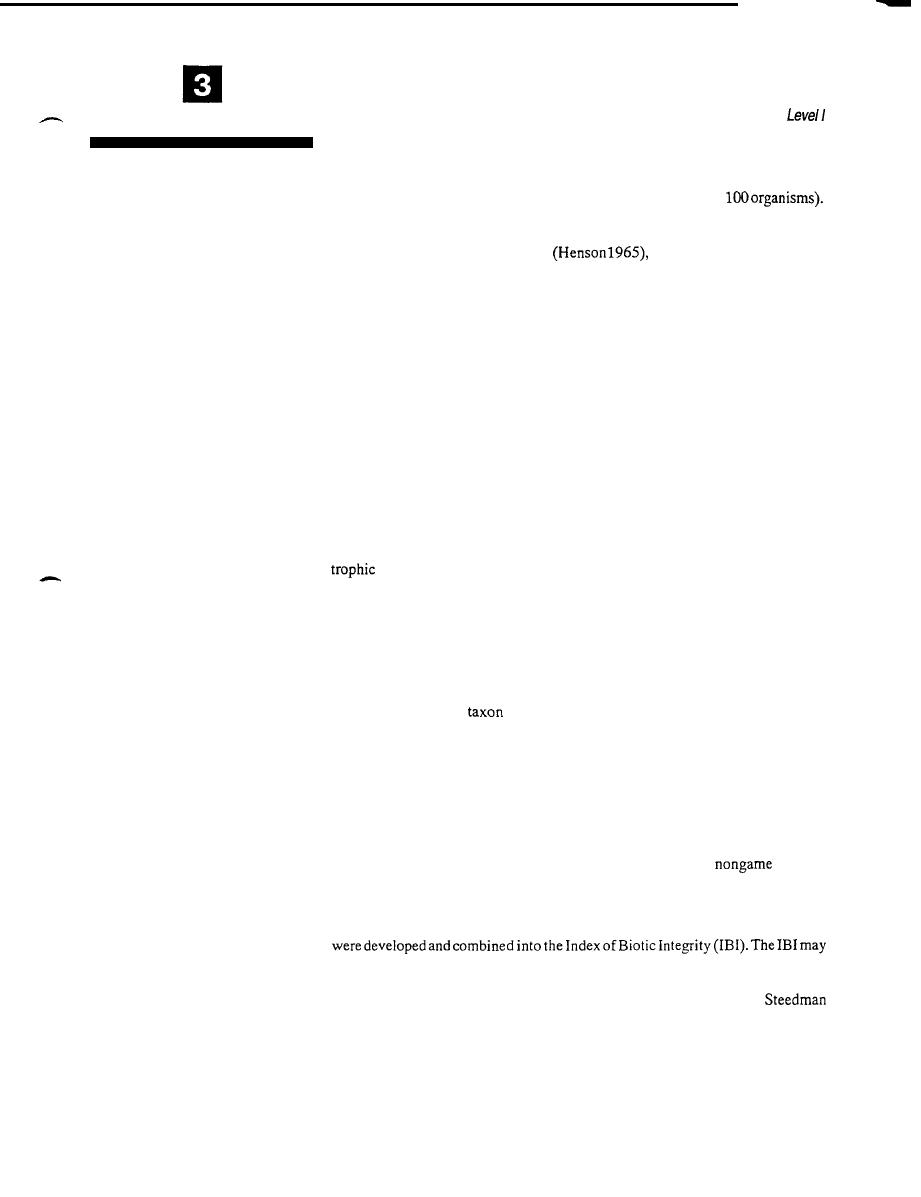
In sand-bottom streams, snags and shoreline habitats may not support enough
organismsforasample(i.e.generally greateror muchgreaterthan
Where natural substrate monitoring does not provide a sufficient collection, use
of artificial substrate samplers such as Hester-Dendy multiplates (Hester and
anchored in thewatercolumn
Dendy 1962)and rock-filled baskets
for a standardized period, may provide an adequate sample.
Many metrics (biological indices) are available for summarizing and reporting
macroinvertebrate monitoring results. Metrics quantitatively describe community
structure, function, or health. A computerized data base such as BIOS is useful for
data storage, retrieval, and calculating metrics. Other metrics may be calculated
using SAS (Plafkin et al. 1989). Recent studies (Resh 1988; Szczytko 1989; Davis
and Lubin 1989) have evaluated macroinvertebrate data sets from California,
Wisconsin, and Ohio to assess statistical properties such as metrics and the
variability and distribution of macroinvertebrate variables.
Zooplankton
Zooplankton. The four major groups of zooplankton are protozoa, rotifers, and
two sub-classes of crustaceans, the cladocerans and the copepods. Protozoa have
high variability even in microhabitats (Hellawell 1986) and little is known about
their population dynamics and productivity (Wetzel 1983). The life histories and
population dynamics of planktonic rotifers and crustaceans have been studied to
a greater extent. Rotifers and crustaceans may help to regulate or respond to the
status of a lake. They can feed selectively on phytoplankton (based on
palatability or size) and zooplankton populations may be regulated by the feeding
activities of planktivorous fish. Horizontal variability in zooplankton may be due
to the effects of wind, weather, and their avoidance of shoreline areas (Wetzel
1983).
Fish. Fish monitormg results can be related to designated use. Fisheries variables
Fish
are the result of management impacts on the fishery, natural conditions, and the
interaction with lower
in the food chain. In addition, the public may be able
to understand fish monitoring results more easily than other taxonomic groups.
Quantitative fish sampling may be difficult due to nonrandom distribution, gear
selectivity, and efficiency; however, creel surveys may be useful if carefully
designed. On the other hand, Hendricks et al. (1980) discuss some of the
disadvantages of monitoring fish.
Hocutt and Stauffer (1980) provide descriptions of methods for stream, reservoir,
and lake fish sampling. Protocols also vary by species so that more than one type
of gear or approach may be required to sample game and
species
representative of the stock. Testing is essential to sampling protocol development.
Karr et al. (1986) developed a multihabitat stream fish survey to evaluate
individual, community, and zoogeographic factors. For data analysis, 12 metrics
be used for the development of stream and lake fish monitoring programs for
regions beyond Illinois, where the method was developed. Examples of regional
applications of the IBI were given by Leonard and Orth (1986) and
(1988).
3.12



 Previous Page
Previous Page
